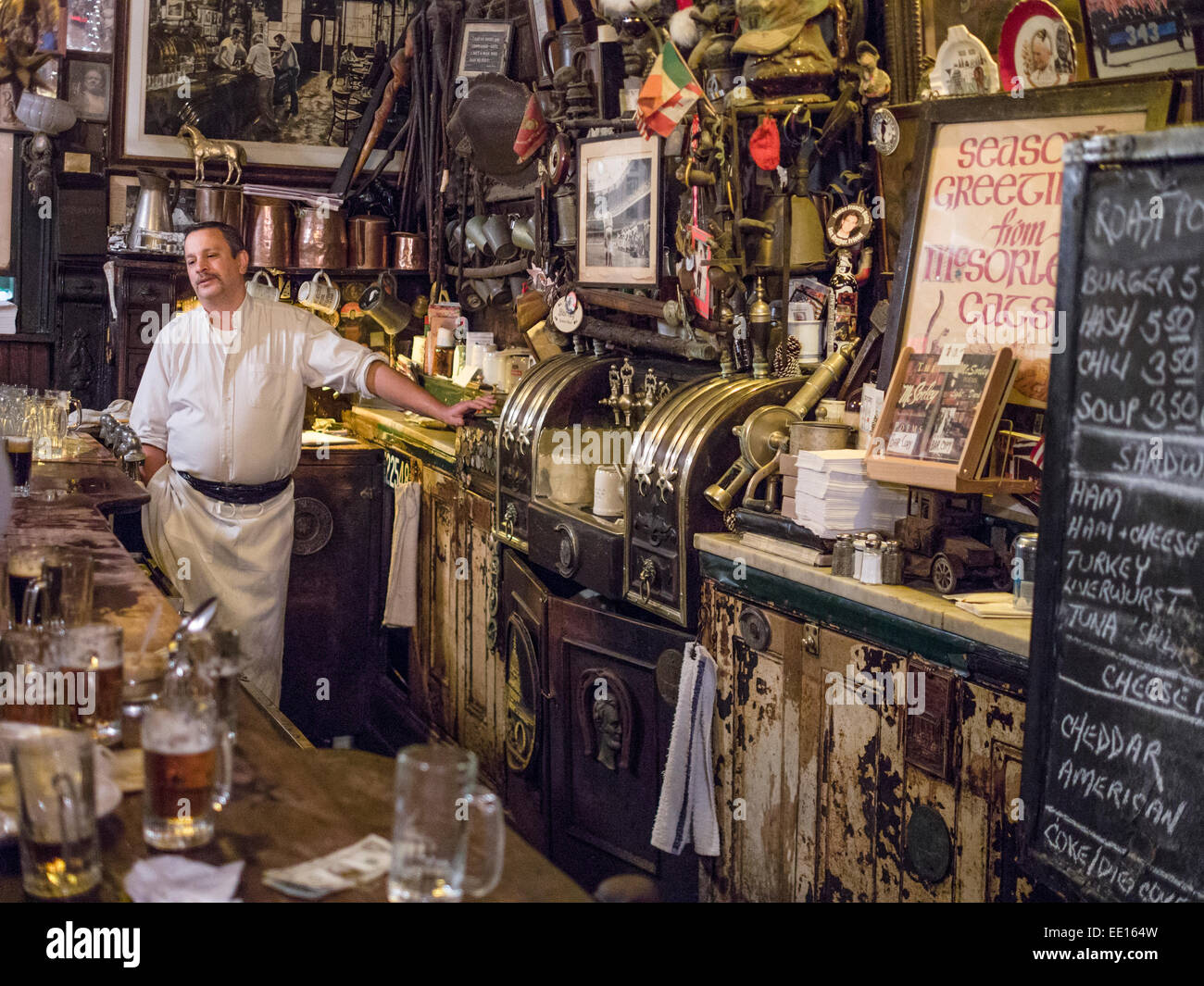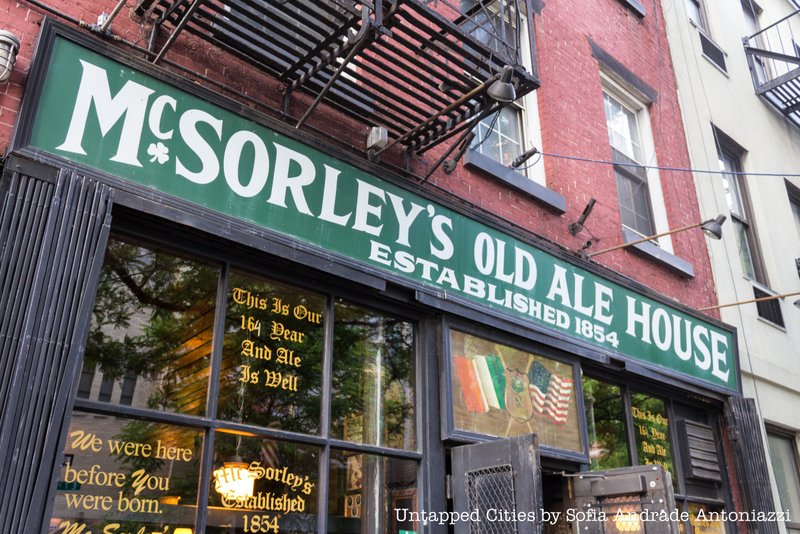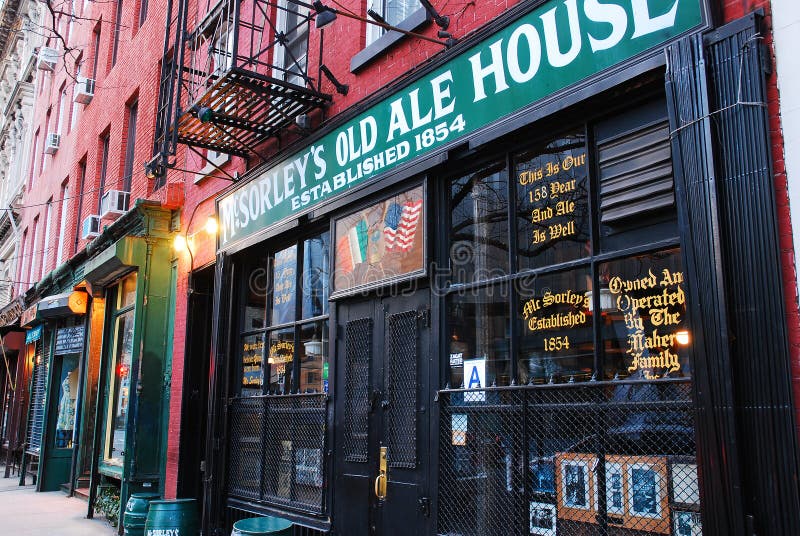Table Of Content

Fraunces Tavern has been rebuilt several times, but McSorley’s has remained virtually unchanged—and has served ale continuously, even during Prohibition—for 165 years. According to legend, bartenders would step on a special pedal to fill the mugs with the real deal to longtime customers. McSorley’s managed to avoid legal trouble because many of Tammany Hall politicians drank there throughout Prohibition.
Health & Wellness
I am lucky enough to have once been a patron and to have experienced the vast history amongst the walls of the old ale house. As you span the room, you will notice there are no bar stools. The bar is famous for its standing room only, as it contains crowds up to three rows deep during busy times. Unfortunately, the original taps no longer in use, still stand today and are another fixture in the bar’s history.
Become an Atlas Obscura member and experience far fewer ads and no pop-ups.
McSorley's Celebrates 170 Years as a Gotham Institution - The New York Sun
McSorley's Celebrates 170 Years as a Gotham Institution.
Posted: Fri, 16 Feb 2024 08:00:00 GMT [source]
It has also attracted many political guests including Abraham Lincoln, Ulysses S. Grant and Theodore Roosevelt. The memories of ex-presidents, popular society figures, entertainers and athletes mingle with the working class, as the poets and artists mix in to enjoy the same old ale as those before them. Every visit to McSorley’s reveals new history which may have been missed on a prior visit. Once again, a story can be told by what you won’t find at McSorley’s. The only other drink available, in addition to the two ales, is soda, and a limited, reasonably-priced food menu is posted daily on two chalkboards.
McSorley’s Old Ale House, NYC’s oldest Irish pub, is steeped in history

There are no bad seats (providing you can get one) and no bad views. From every wall, to each nook-and-cranny — history pours as freely as ale from the taps. The 1940’s brought with it a world war and a new brewer of McSorley’s Ale.

While I expected to find McSorley's on a quaint cobblestone street given its history, it's located in a built-up section of the East Village on East 7th Street, by Astor Place. Not only is McSorley's the most historic Irish tavern in New York, but it's also often called the oldest Irish tavern in America that's still in operation. Established in 1854, McSorley's is celebrating its 170th anniversary this year, and it is certainly the place to go around St. Patrick's Day. The bones left still hanging represent the troops who did not return. In 2011, the two dozen wish bones were finally dusted off and cleaned in response to health inspectors' orders. McSorley's is located in between the West and East Village on East 7th Street between 2nd and 3rd Avenues.
Friday's parting anniversary shot - EV Grieve
Friday's parting anniversary shot.
Posted: Fri, 16 Feb 2024 08:00:00 GMT [source]
Life Without Light: Creatures in the Dark With Sarah McAnulty
He bought a fire-alarm gong similar to those used in schools and factories and screwed it to the seven-foot-tall icebox behind the bar. If someone started a song, or if the old men sitting around the stove began to yell at each other, he would shuffle over to the gong and give the rope a series of savage jerks. The gong is there yet and is customarily sounded at a quarter to midnight as a warning that closing time is imminent; the customers grab their ears when it goes off.
Almost every inch of the walls was adorned with old photos, newspaper clippings, pictures of Irish American presidents, and festive St. Patrick's Day decorations. A large flag hung behind the bar with the number 169 on it — the number of years the bar has been open. When I visited McSorley's, the bar was teeming with people and there were very few places to sit. I'm always a little hesitant about ordering bar food – you just never know what you're going to get, especially from places popular with tourists — but I was surprised by how much I liked the burger.
There are no TVs at McSorley’s and no ambient music—the only noises you’ll hear are the clinking of glasses and the muted hum of people’s conversations. But on a Tuesday afternoon, it’s easy enough to grab a couple of beers, settle into a worn wooden table, and imagine the people who have passed through its double doors in need of “a cold beer to warm up”—a phrase Buggy uses frequently. At the very least, McSorley’s can claim the title of “oldest Irish pub” in the city. It’s no surprise that McSorley’s—with its green, shamrock-emblazoned storefront—is a popular destination on St. Patrick’s Day. McSorley’s is not the oldest bar in New York City—that distinction goes to Fraunces Tavern, open since 1762—although Shane Buggy, a bartender at McSorley’s, disputes this fact.
Cooper Square
Drunks reel over from the Bowery and go to sleep in doorways, and the kids give them hotfoots with kitchen matches. In McSorley’s the free-lunch platters are kept at the end of the bar nearer the street door, and several times every afternoon kids sidle in, snatch handfuls of cheese and slices of onion, and dash out, slamming the door. It’s also easy to imagine who hasn’t visited McSorley’s over the years. The pub, whose motto was “Good Ale, Raw Onions, and No Ladies,” was not yet ready to get with the times.
Though its wooden walls and doors may be etched and notched by wear, its beauty and nostalgia endure in the smooth ale poured and the patrons who were there—lending truth to its motto, we have been here before you were born. It rode the fervor of Abraham Lincoln’s historic Cooper Union Address delivered in New York City. They served the 16th president their signature brew, only to later lament the fateful news of his assassination in April of 1865. Strangely, Lincoln shares this similarity to JFK, who was also rumored to have tasted McSorley’s toasted lager. They hang from an iron chandelier above the bar forbidden to be touched.
The two-glass policy evolved so father and son could tend to their hobbies in between pours. The lawsuit compelled New York City Mayor John V. Lindsay to sign an executive order prohibiting discrimination on the basis of sex in bars and other public accommodations. At 3pm the next day, McSorley’s opened its doors to women for the first time. Kirwan was not present, explaining that she did not wish to break the bar’s tradition.
To a steady McSorley customer, most other New York saloons seem feminine and fit only for college boys and women; the atmosphere in them is so tense and disquieting that he has to drink himself into a coma in order to stand it. In McSorley’s, the customers are self-sufficient; they never try to impress each other. In other saloons if a man tells a story, good or bad, the man next to him laughs perfunctorily and immediately tries to tell a better one. For one thing, it is dark and gloomy, and repose comes easy in a gloomy place. Also, there is a thick, musty smell that acts as a balm to jerky nerves; it is really a rich compound of the smells of pine sawdust, tap drippings, pipe tobacco, coal smoke, and onions.
There have been few structural changes to the Old Ale House, the kitchen being a glaring exception. With the Supreme Court ruling of 1970 (allowing women entry into McSorley’s), the bathroom became coed. Sixteen years later, a ladies room was installed, displacing the galley. The kitchen’s current niche is the only significant addition to the original layout. Pub fare at McSorley’s is as consistent as everything else about the place.
Mr. Cooper, in his declining years, spent so many afternoons in the back room philosophizing with the workingmen that he was given a chair of his own; it was equipped with an inflated rubber cushion. He gave the saloon a life-sized portrait of himself, which hangs over the mantel in the back room. It is a rather appropriate decoration, because, since the beginning of prohibition, McSorley’s has been the official saloon of Cooper Union students. Sometimes a sentimental student will stand beneath the portrait and drink a toast to Mr. Cooper.

No comments:
Post a Comment